Benjamin West
Paintings
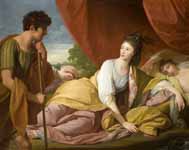
Cymon and Iphigenia
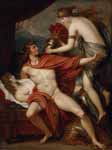
Thetis bringing the Armor to Achilles
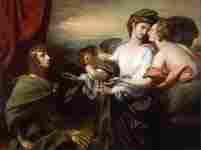
Helen Brought to Paris
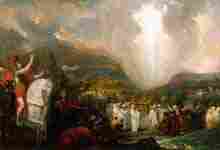
Joshua passing the River Jordan with the Ark of the Covenant
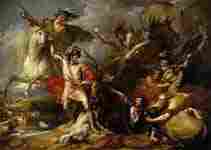
Alexander III of Scotland Rescued from the Fury of a Stag by the Intrepidity of Colin Fitzgerald ('The Death of the Stag')
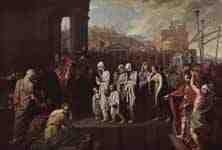
Agrippina Landing at Brundisium
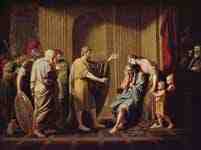
Kleombrotos sent into Exile by Leonidas II
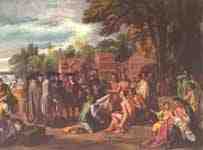
Penn's negotiations with the Indians
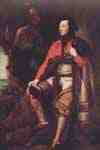
Portrait of Colonel Guy Johnson
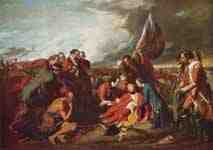
Death of General Wolfe
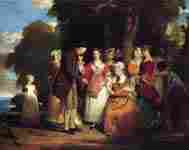
A Domestic Affliction
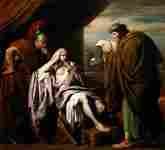
Alexander the Great's confidence in his physician Philip of Acarnania.
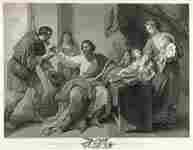
Alfred the Great dividing his Loaf with the Pilgrim
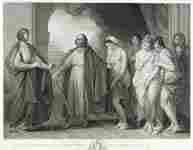
Alfred the Third, King of Mercia, visiting William d'Albanac
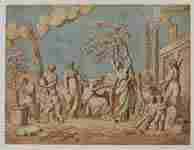
Allegory of Botany
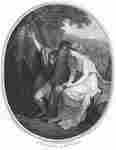
Angelica and Medoro
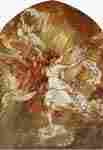
Angels Announcing the Birth of Our Savior
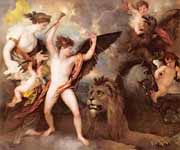
Omnia vincit amor
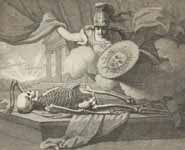
Certificate of attendance at a course of lectures on anatomy
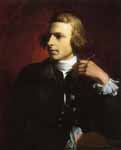
Charles Wilson Peale
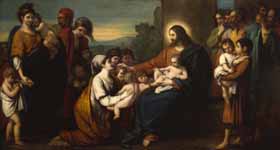
Christ blessing Little Children,
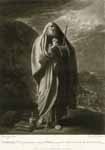
Chryses invoking the Vengeance of Apollo against the Greeks
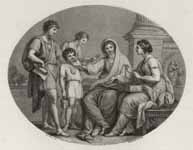
Cornelia, Mother of the Gracchi, shewing her Children as her only Ornaments
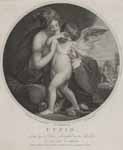
Cupid Stung by a Bee
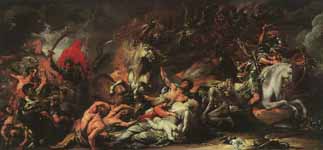
Death on a Pale Horse,
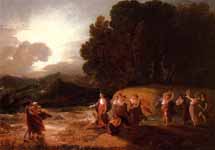
Calypso's Reception of Telemachus and Me
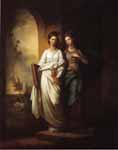
Fidelia and Speranza
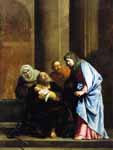
Simeon with the Infant Jesus
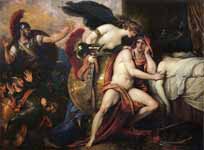
Thetis Bringing the Armor to Achilles
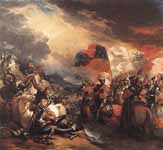
Edward III Crossing the Somme
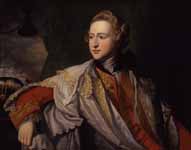
Francis Osborne, th Duke of Leeds
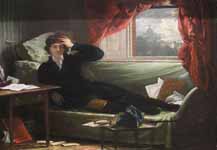
General Thaddeus Kosciusko
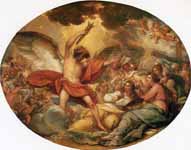
Genius Calling Forth the Fine Arts to Adorn Manufactures and Commerce
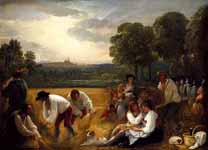
Harvesting at Windsor
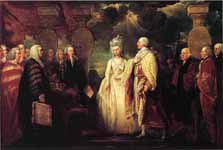
His Majesty George III Resuming Power
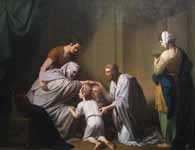
Jacob Blessing Ephraim and Manasseh
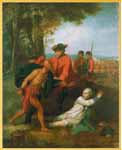
General Johnson Saving a Wounded French Officer from the Tomahawk of a North American Indian
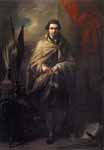
Joseph Banks
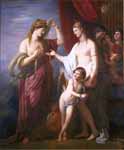
Juno Receiving the Cestus from Venus,
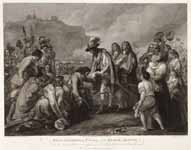
King Charles II landing on the Beach at Dover
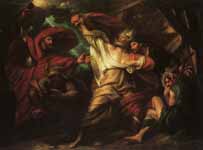
King Lear Act III scene 4
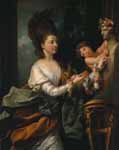
Lady Beauchamp-Proctor
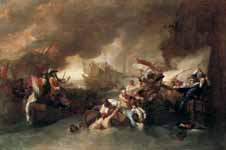
The Battle of La Hogue
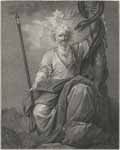
Moses showing the Brazen Serpent
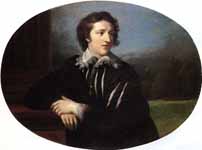
Mr. John Williams
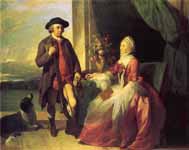
Mr. Robert Grafton and Mrs. Mary Partridge Wells Grafton
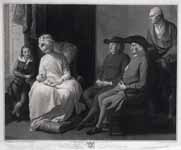
Mr. West and Family by Georg Siegmund Facius
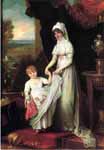
Mrs Thomas Keyes and Her Daughter
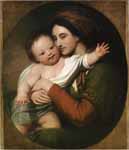
Mrs. Benjamin West and Her Son Raphael
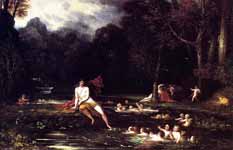
Narcissus and Echo
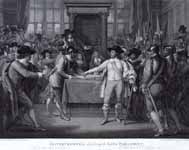
Oliver Cromwell dissolving the Long Parliament
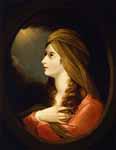
Portrait of a Lady,
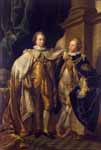
Portrait of George, Prince of Wales, and Prince Frederick, later Duke of York
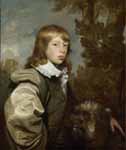
Portrait of James Ward
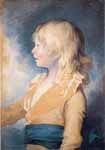
Portrait of Prince Octavius
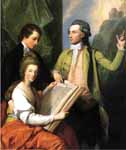
Portrait of the Drummond Family
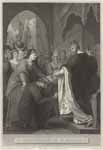
Prince John's Submission to Richard I

Pylades and Orestes Brought as Victims to Iphigenia
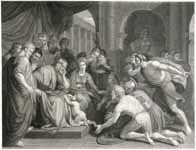
Pyrrhus when a Child, brought before Glaucias
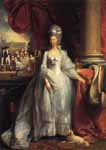
Queen Charlotte
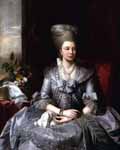
Queen Charlotte
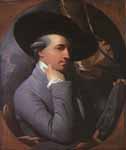
Self-Portrait,
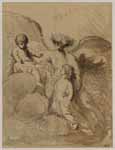
Study for 'The Apotheosis of the Princes Octavius and Alfred' (Buckingham Palace)
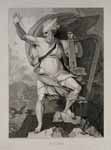
The Bard
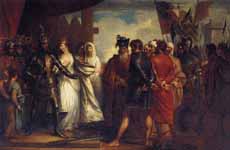
The Burghers of Calais
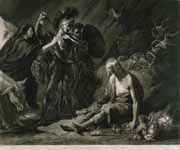
The Cave of Despair
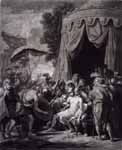
The Death of Epaminondas
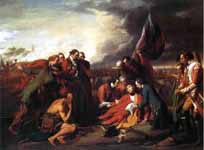
The Death of General Wolfe
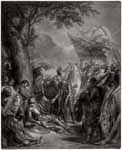
The Death of the Chevalier Bayard

The Drummond Brothers
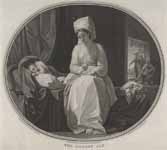
The Golden Age
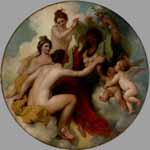
The Graces unveiling Nature
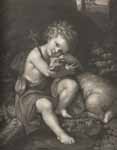
The Infant St. John
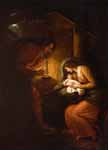
The Nativity
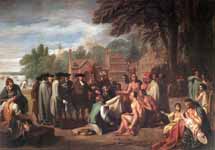
The Treaty of Penn with the Indians

The Woman Clothed with the Sun Fleeth from the Persecution of the Dragon
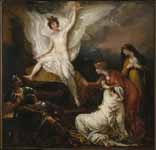
The Women at the Sepulchre (The Angel at the Tomb of Christ)
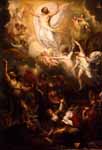
Thetis bringing the Armor to Achilles,
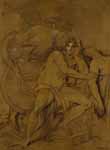
The Ascension
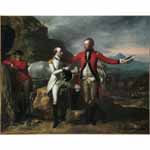
Two Officers and a Groom in a Landscape
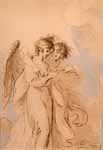
Two Angels Singing
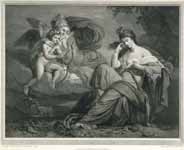
Venus and Europa
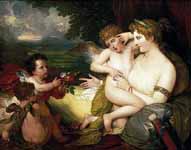
Venus comforting Cupid stung by a bee
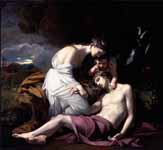
Venus Lamenting the Death of Adonis
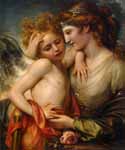
Venus Consoling Cupid Stung by a Bee
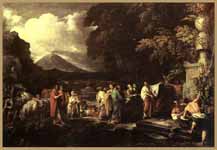
Cicero Discovering the Tomb of Archimedes
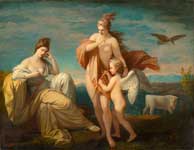
Mercury and Argus
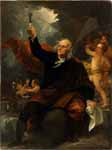
Franklin Drawing Electricity from the Sky
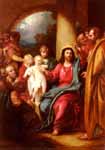
Christ Showing A Little Child As The Emblem Of Heaven
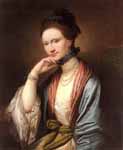
Portrait Of Ann Barbara Hill Medlycott
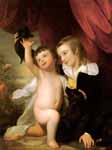
Portrait Of Raphael West And Benjamin West Jr
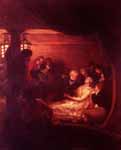
The Death Of Nelson
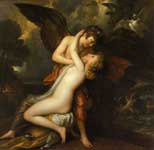
Cupid and Psyche
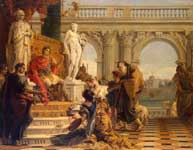
Mercury and Argus
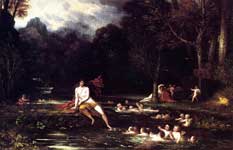
Narcissus and Echo
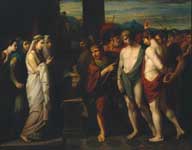
Pylades and Orestes Brought as Victims before Iphigenia
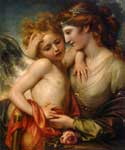
Venus Consoling Cupid Stung by a Bee
Drawings
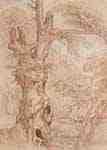
The Herons oak in small Windsor Park
Portraits of Benjamin West by others
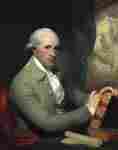
Benjamin West by Gilbert Stuart
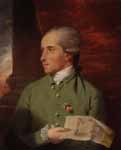
Benjamin West by John Downman
Buy Fine Art Prints | Greeting Cards | iPhone Cases
Benjamin West, RA (October 10, 1738 – March 11, 1820) was an Anglo-American painter of historical scenes around and after the time of the American War of Independence. He was the second president of the Royal Academy in London, serving from 1792 to 1805 and 1806 to 1820.
Early life
West was born in Springfield, Pennsylvania, in a house that is now in the borough of Swarthmore on the campus of Swarthmore College,[1] as the tenth child of an innkeeper. The family later moved to Newtown Square, Pennsylvania, where his father was the proprietor of the Square Tavern, still standing in that town. West told John Galt, with whom, late in his life, he collaborated on a memoir, The Life and Studies of Benjamin West (1816, 1820) that, when he was a child, Native Americans showed him how to make paint by mixing some clay from the river bank with bear grease in a pot. Benjamin West was an autodidact; while excelling at the arts, "he had little [formal] education and, even when president of the Royal Academy, could scarcely spell" (Hughes, 70).
From 1746 to 1759, West worked in Pennsylvania, mostly painting portraits. While in Lancaster, Pennsylvania, in 1756, West's patron, a gunsmith named William Henry, encouraged him to design a "Death of Socrates" based on an engraving in Charles Rollin's Ancient History; the resulting composition, which significantly differs from West's source, has been called "the most ambitious and interesting painting produced in colonial America."[2] Dr William Smith, then the provost of the College of Philadelphia, saw the painting in Henry's house and decided to patronize West, offering him education and, more important, connections with wealthy and politically-connected Pennsylvanians. During this time West met John Wollaston, a famous painter who immigrated from London. West learned Wollaston's techniques for painting the shimmer of silk and satin, and also adopted some of "his mannerisms, the most prominent of which was to give all his subjects large almond-shaped eyes, which clients thought very chic" (Hughes, 71).
Career
In 1760, sponsored by Smith and William Allen, reputed to be the wealthiest man in Philadelphia, West traveled to Italy where he expanded his repertoire by copying the works of Italian painters such as Titian and Raphael.
As painted by Gilbert Stuart, 1783-84
West was a close friend of Benjamin Franklin, whose portrait he painted. Franklin was also the godfather of West's second son, Benjamin.
In 1763, West moved to England, where he was commissioned by King George III to create portraits of members of the royal family. The king himself was twice painted by him. He painted his most famous, and possibly most influential painting, The Death of General Wolfe, in 1770, exhibited at the Royal Academy in 1771. Although originally snubbed by Sir Joshua Reynolds, the famous portrait painter and President of the Royal Academy, and others as over ambitious, the painting became one of the most frequently reproduced images of the period.
In 1772, King George appointed him historical painter to the court at an annual fee of £1,000. With Reynolds, West founded the Royal Academy of Arts in 1768. He was the second president of the Royal Academy from 1792 to 1805. He was re-elected in 1806 and was president until his death in 1820. He was Surveyor of the King's Pictures from 1791 until his death. Many American artists studied under him in London, including Charles Willson Peale, Rembrandt Peale, Gilbert Stuart, John Trumbull, and Thomas Sully.[3]
West is known for his large scale history paintings, which use expressive figures, colours and compositional schemes to help the spectator to identify with the scene represented. West called this "epic representation". In 1806 he produced The Death of Nelson, to commeortate Horatio Nelson's death at the Battle of Trafalgar.
He died in London.
References
1. ^ Benjamin West Explore Pennsylvania
2. ^ Allen Staley, “Benjamin West,” in Benjamin West: American Painter at the English Court (Baltimore, 1989), 28. For more on this painting, see Scott Paul Gordon, “Martial Art: Benjamin West’s Death of Socrates, Colonial Politics, and the Puzzles of Patronage.” William and Mary Quarterly 65, 1 (2008): 65-100.
3. ^ "The Joseph Downs Collection". Winterthur Library. http://findingaid.winterthur.org/html/HTML_Finding_Aids/COL0394.htm. Retrieved 2008-03-24.
Sources
* John Galt, The Life and Studies of Benjamin West, Esq. (1816).
* Helmut von Erffa and Allen Staley, The Paintings of Benjamin West (New Haven, 1986).
* Ann Uhry Abrams, The Valiant Hero: Benjamin West and Grand-Style History Painting (Washington, 1985).
* James Thomas Flexner, “Benjamin West’s American Neo-Classicism,” New-York Historical Society Quarterly 36, 1 (1952), 5–41, rept. in America’s Old Masters (New York, 1967), 315–40.
* Susan Rather. Benjamin West, John Galt, and the Biography of 1816. The Art Bulletin, Vol. 86, No. 2 (Jun., 2004), pp. 324–345
External links
* The Winterthur Library Overview of an archival collection on Benjamin West.
* Royal Academy Collections website Loyd Grossman talking about West's work
* Union List of Artist Names, Getty Vocabularies. ULAN Full Record Display for Benjamin West. Getty Vocabulary Program, Getty Research Institute. Los Angeles, California.
Retrieved from "http://en.wikipedia.org/ ", Text is available under the Creative Commons Attribution-ShareAlike License
